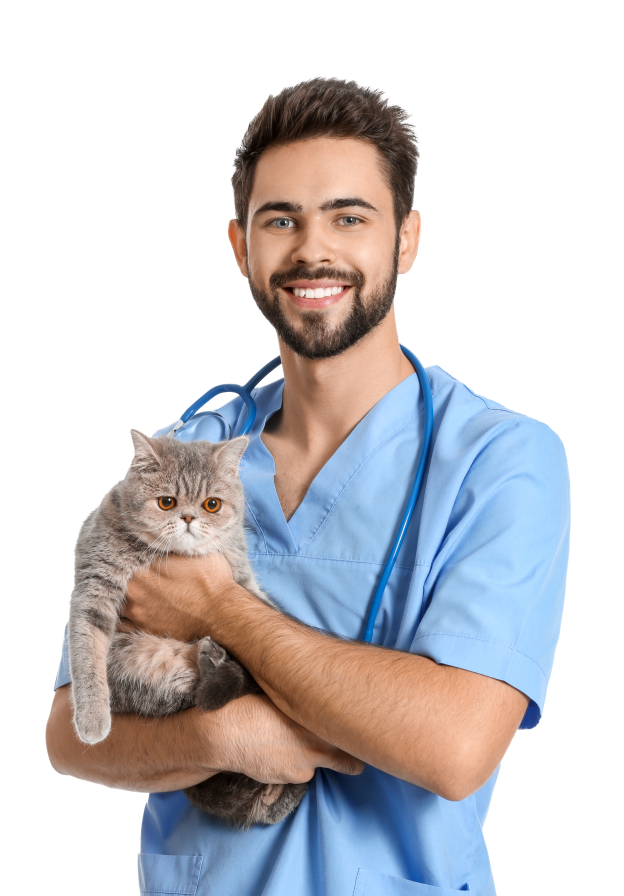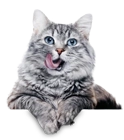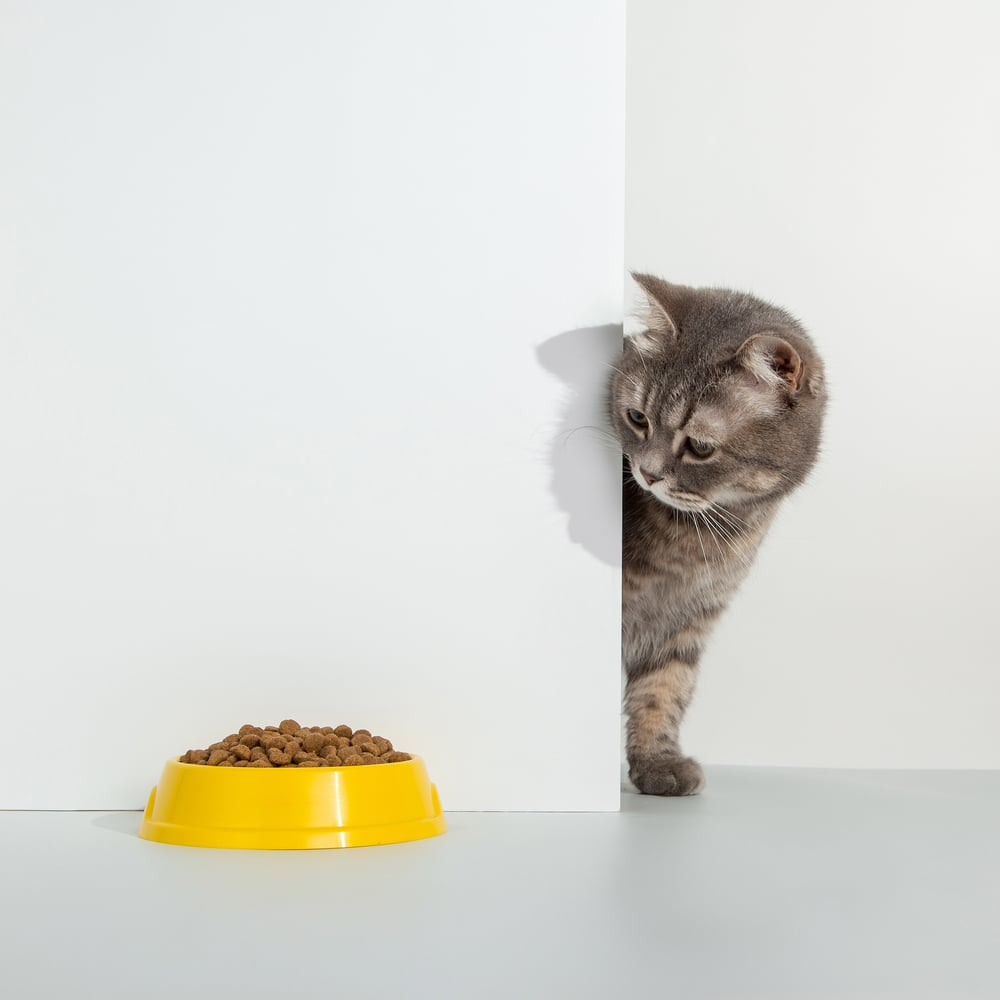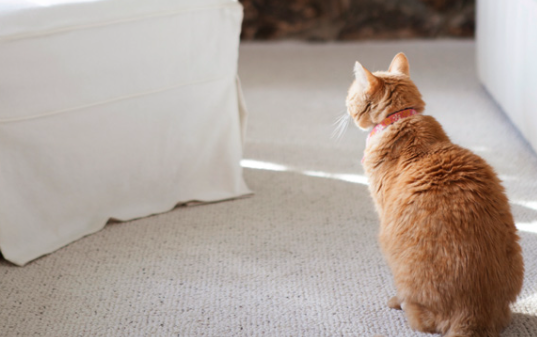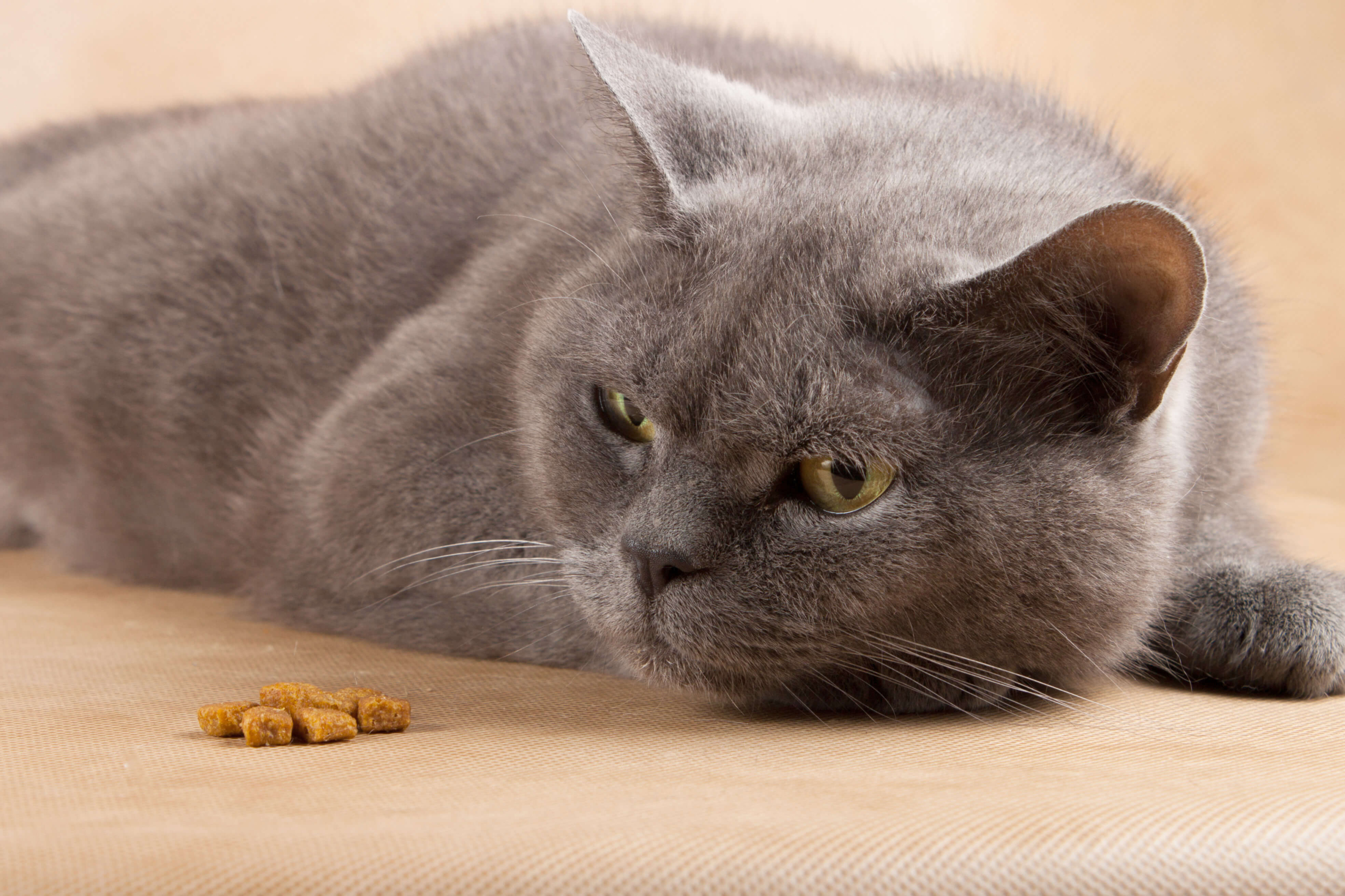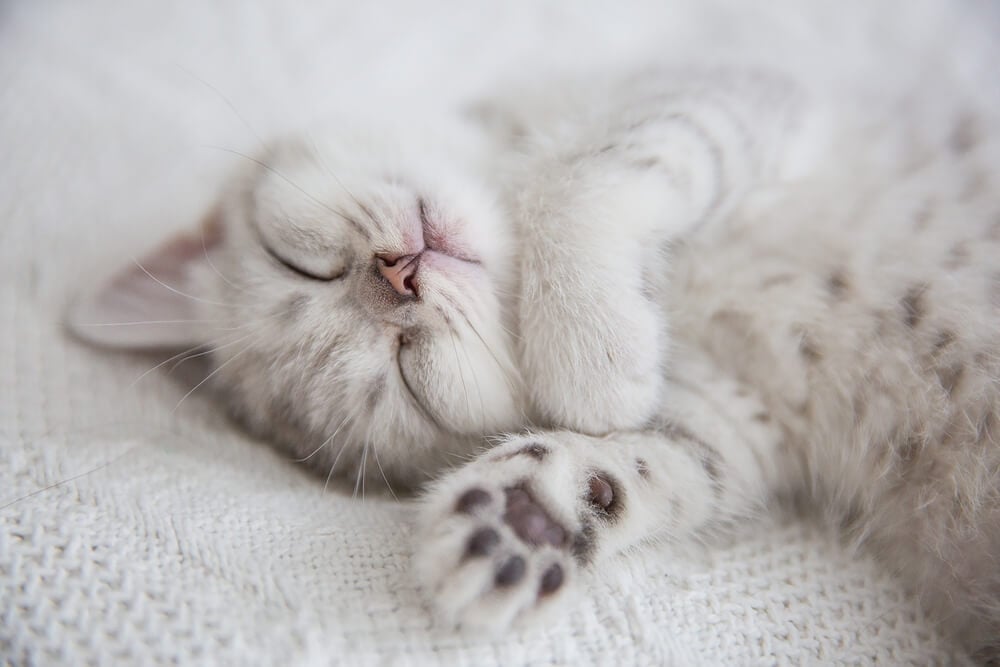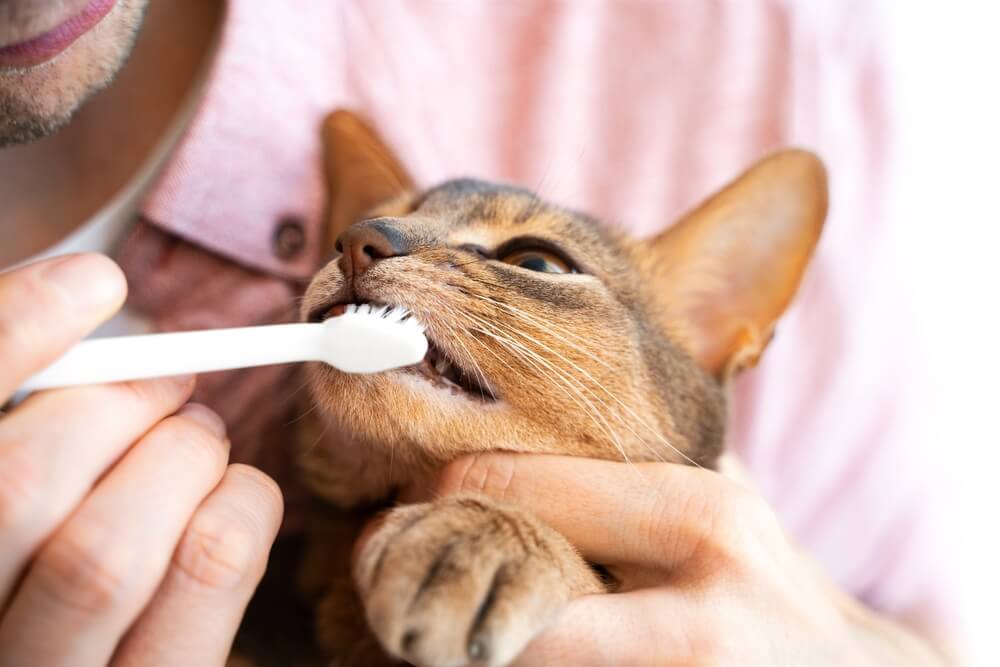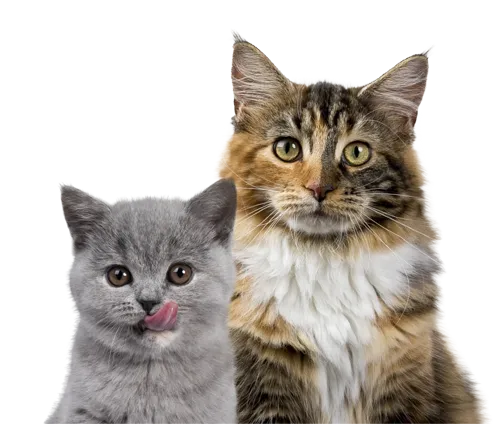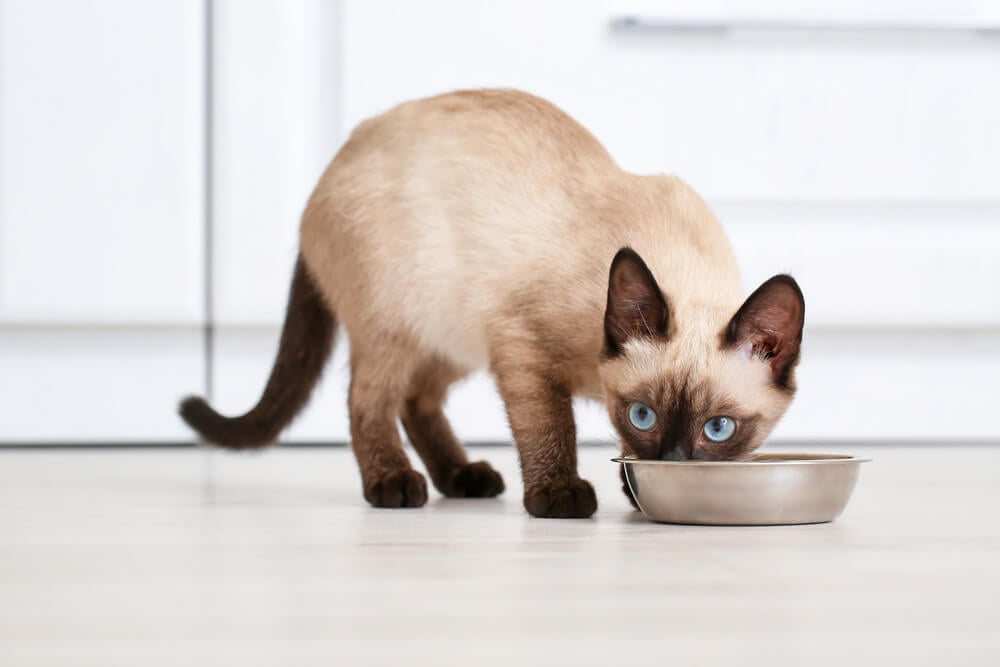
You wouldn’t eat your dinner tucked away in a cold corner of the kitchen with other family members walking past you while you consume your food, as the washing machine enters its spin cycle millimeters from your head. So why should you inflict this scenario on your cat?
The position of your cat’s bowls is something you may not have given much consideration to. Maybe you just plonk it down wherever there’s space on the floor. But if your cat’s a picky eater, or often leaves half their food uneaten, it may be down to the position of their bowl.
The answer regarding where you should put your cat’s dish will vary from cat to cat, and from house to house. But it can make a difference to your cat’s eating habits, as well as help anxiety levels in nervous cats.
Here at Cat Food Advisor, we already provide plenty of tips about choosing the best type of bowl for your cat, and how to keep your cat’s bowl clean, as well as plenty of advice on the best food to put in that bowl.
Here are some suggestions of things to think about when deciding where to put your cat’s food and water bowls.
Don’t put kitty in a corner
Placing your cat’s bowl in a corner might seem like a good idea when you’re considering space. But think about it from your cat’s point of view — they are trying to eat while boxed in against two walls. This means they have no view behind them of someone coming to steal their food, or worse, their instinct to protect themselves from predators, especially if you share a home with other cats or dogs. This position can make some cats anxious, as they feel unsafe and less secure, which in turn could lead to disruption to their eating.
The solution is to place their bowl where they can see what’s going on around them. This way they can feel more secure as they eat their food.
Keep things calm and quiet
Some rooms in the house have more foot traffic than others, and your kitchen can be one of the busiest, yet it’s often where the bowls are placed due to practical reasons.
If people are constantly walking closely past your cat as they eat, it can cause them anxiety, especially if someone has stood on their tail while they eat in the past.
Equally, if there’s noise and smells from dishwashers, washing machines, trash cans, and kitchen appliances, it can distract your cat while they eat or even startle them if they’re noisy.
If this is the case in your house, consider feeding them in a different room if possible — somewhere quieter and calmer, such as a spare room or bathroom.
Try a few different spots out to see which your cat prefers — keep an eye on their body language, and how tense they look as they eat, and base the placement on this information.
Stay away from the litter box
It may sound obvious, but this rule is often overlooked. Not only is it unhygienic to put your cat’s food near their litter box, but it may also stress your cat out. Their instinct tells them not to eat near their toilet so predators don’t pick up scents.
Keep the water bowl separate
For some cats, it’s deep within their instincts not to eat near water, so having their food and water placed close together can unsettle them.
Again, if your cat is experiencing problems eating or drinking, try putting some space between the bowls to see if that helps reduce anxiety.
Lift the experience
Raising your cat’s food bowl off the ground has also been shown to help them in several ways. There’s elevating it as in putting it on a shelf so your cat can leap up and eat in peace and quiet without fear of disturbance. There’s also elevating it via a small stand so they are not bending their neck down to the floor to eat. There are claims this can help cats who suffer from vomiting or regurgitation, as well as aiding with digestion.
Not all cats are the same, but if your cat is having issues eating, try some of these bowl-location tips to see if it helps them tuck into their meals.
We uphold the highest editorial standards when creating the authoritative content pet parents rely on and trust.
Every piece of clinical content on the Cat Food Advisor is reviewed by our certified Veterinary Advisory Board, which consists of licensed veterinarians and medically certified specialists.
Our reviews are completely independent; we are not paid by any pet food company to promote their products favorably. We do not accept money, gifts, samples or other incentives in exchange for special consideration. For more information see our Disclaimer & Disclosure page.
